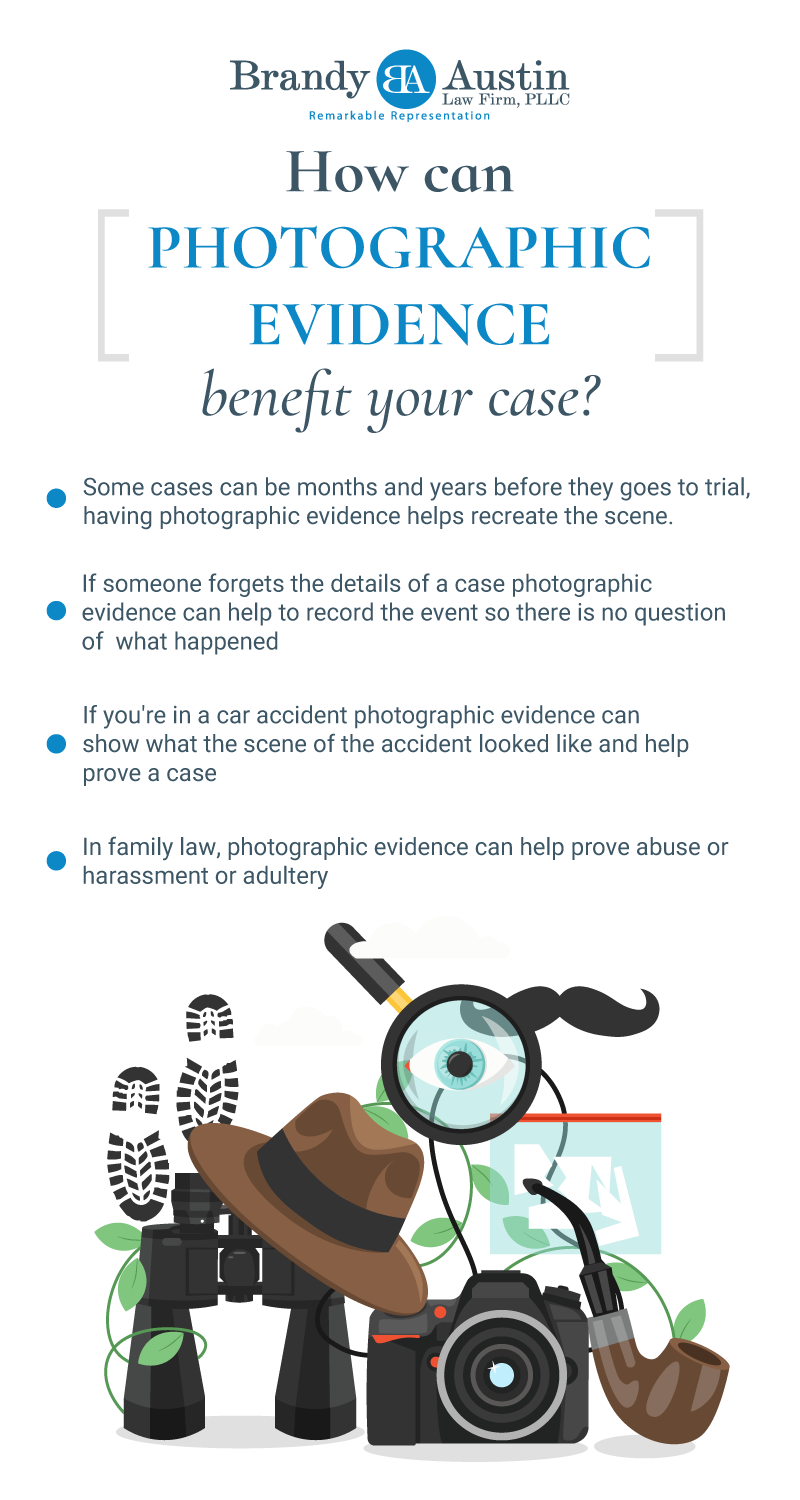In 1826 France, Joseph Niepce would take the first-ever photograph from a homemade camera of the upstairs view of his estate, probably not knowing he was changing the face of history. From early man cave paintings to the hundreds of years of works in The Louvre, humans have been depicting and capturing moments in time for thousands of years. Today, we take for granted the meshing of metal, plastic, and glass in our pockets and the ability to freeze those moments in time. It would only take 30 years for the technology used for that first innocent photograph to completely change the way law enforcement and the justice systems collected and preserved evidence.
We have definitely come a long way, since then and technology has become more portable, easier to use, and continues to change the legal world. The phrase “ a picture tells a thousand words” is one most people have heard and used but what does that mean exactly? If I described to you a white flower with delicate petals on a green stem what do you see? A Daisy, Rose, maybe a Lily? Even if I become more detailed in the description there is not a guarantee that you are going to see what I am trying to convey. Photographic evidence when used correctly still proves to be the best way to convey something to someone. To try to show what actually happened. Photographic evidence collected and used every day in every area of law, from criminal to personal injury it’s one of the best tools anyone can have.
While not technically considered evidence themselves photographs are still a tool used to provide a visual representation of events. Photographic evidence is utilized worldwide by investigators and defenders to assist in uncovering the truth. The most important use of photographic evidence is documenting a scene. Taking photographs of every detail is important, most notably law enforcement does this when investigating crimes. Of course, you see this all the time on television, as your favorite rebellious good guy/lady cop walks on to a crime scene to see an alleged robbery gone wrong, and there are three or four investigators walking around putting yellow cards with numbers everywhere and snapping pictures. That actually happens and when done right can really help with proving a case. Using photographic evidence doesn’t only apply to criminal matters.
Photographic evidence isn’t only limited to one area of law but can be applied to many different areas. Take personal injury cases, it can be months and years after the accident before it goes to trial, so keeping a record is very important. Having you or your client collect photographic evidence of their injuries, their property, and the scene is important. Those images can be an influential tool to show the insurance company or jury your client’s injuries before they were healed, they will show that property damage before it was repaired or replaced and that scene covered in shattered glass and twisted metal before it was cleaned away.
Another reason photographic evidence is important is that when your client has gone through something tragic they may not remember every detail nor understand where that car came from or their attacker. Photographic evidence can assist in recreating the scene so that experts can assist in proving certain details of a story are correct or incorrect. While you hope as the client that your attorney believes you and as an attorney that your client is telling the truth photographic evidence is always good to have on your side. The more evidence you have the better. All of that evidence you have collected will help build a case hopefully in the client’s favor.
Of course, this works both ways. With the invention of social media, photographic evidence is everywhere so claiming your client was horribly injured but there are pictures out there of your client rock climbing in Mexico a few days after their “life-changing” accident may not work so well in their favor.
Another maybe not so obvious legal area photographic evidence is its use in family law. Probably one of the toughest areas to prove, when he said she said they said there can be a lot of noise and it can be difficult to hear what is really going on but seeing is believing in. Keeping a record of events and photographic evidence can provide assistance by providing a visual representation of abuse, and negligence. Conversely, it can also provide a visual of togetherness, happiness, and love. These are important aspects when trying to prove your case.
We’ve come a long way from men in caves painting photographic evidence of the world they lived in. When used correctly photographic evidence can be a powerful tool. Whether you are trying to prove innocence, show fault, or build a preview into the life of a family a picture speaks louder than words.
If you would like to learn more about how photographic evidence can help your case, contact our office for a free consultation (817)841-9906.





